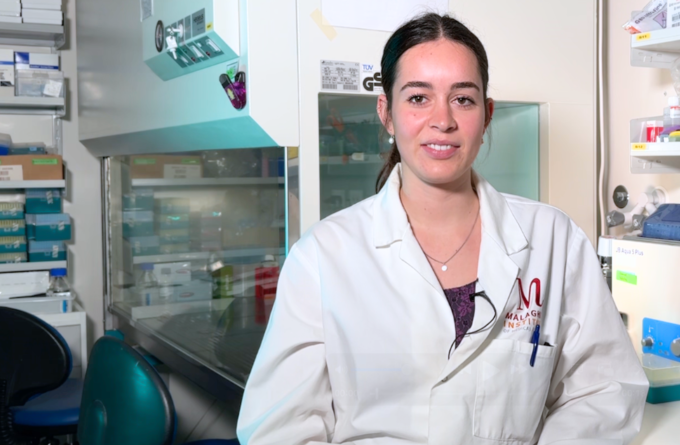2 July 2025
Research from the Malaghan Institute has added an important piece to the puzzle of allergic disease, showing that cellular signalling molecules, type I interferons, are essential in driving allergic responses in the skin.

Professor Franca Ronchese (left) and Dr Olivier Lamiable.
Type I Interferons are a family of circulating proteins that are released by cells in response to the presence of harmful organisms, especially viruses. They "interfere" with viral replication by triggering protective defences in nearby cells.
In addition to the role interferons play in fighting viral infections, the Ronchese Laboratory at the Malaghan was one of the first groups to show that type I interferons also play a role in promoting allergic disease in the skin.
“This research builds on our previous work demonstrating that blocking type I interferons reduces the allergic response,” says team leader in the Ronchese Laboratory Dr Olivier Lamiable. “That in itself was surprising at the time, as type I interferons are one of the main signalling molecules needed to fight viruses – not something one would immediately associate with allergies.
“However, subsequent research by us and other groups around the world have shown that type I interferons are involved in activating dendritic cells, a key type of immune cell associated with allergic disease.
“But we didn’t know precisely which cells the type I interferons are acting on – are they targeting the dendritic cells themselves or affecting some other cell type? Is it correlative or causative? It might sound like fine details, but if we want to make headway in preventing allergies from developing, this kind of granular understanding is absolutely necessary. That’s what the core of this paper is about, to pinpoint exactly which cells type I interferons are interacting with.”
Published in Immunology & Cell Biology, the team confirmed that yes, type I interferons are acting directly on dendritic cells, and those dendritic cells then go on to prime ‘allergic’ T-cells – T-cells that respond to allergens. Using genetic tools the team deleted the dendritic cell’s ability to respond to type I interferons in experimental models, which reduced the production of allergic T-cells.
“We showed that type I interferon increases the expression of around a hundred genes in dendritic cells. We’re now working on using gene-editing tools like CRISPR-Cas9 to set up experimental models to delete specific genes in dendritic cells to find out which ones are driving the development of allergic T-cells,” says Dr Lamiable.
The research provides an important step in tracking how allergies begin, and how we might one day be able to stop them altogether.
It’s helpful to consider allergies not as a ‘thing’, but a process. Allergies are a chain of reactions, one cell nudging another, a conveyor belt pushing biological processes in the direction of sensitisation to things that should otherwise be harmless. In order to find the origin of allergies, one must follow this chain up the ladder, step by step.
As for type I interferons, Dr Lamiable explains it’s not as simple as designing a therapy to block the molecules wholesale.
“Anifrolumab, which blocks the type I Interferon receptor is used by clinicians overseas to treat patients with severe cases of Lupus. However, in the case of allergies, this is not an attractive option as type I interferons are needed to fight viruses after all.
“By studying the mechanism by which type I Interferons trigger the development of allergic T-cells, we hope to find new and more specific treatments against allergies. This research hasn’t been done yet, but it’s something we’d be looking towards in the future.”
Related articles

Dr Kerry Hilligan awarded Sir Charles Hercus Health Research Fellowship
2 December 2025

Marsden funding to drive discovery and innovation in cancer, allergy and infectious disease research
5 November 2025

Malaghan alumni series: Professor Paige Lacy
14 October 2025

Cancer, measles and allergic disease research funded in latest HRC grants round
19 August 2025

The immune system’s misinformation problem
27 June 2025

Research sheds new light on the allergic response – and how to disrupt it
5 June 2025
